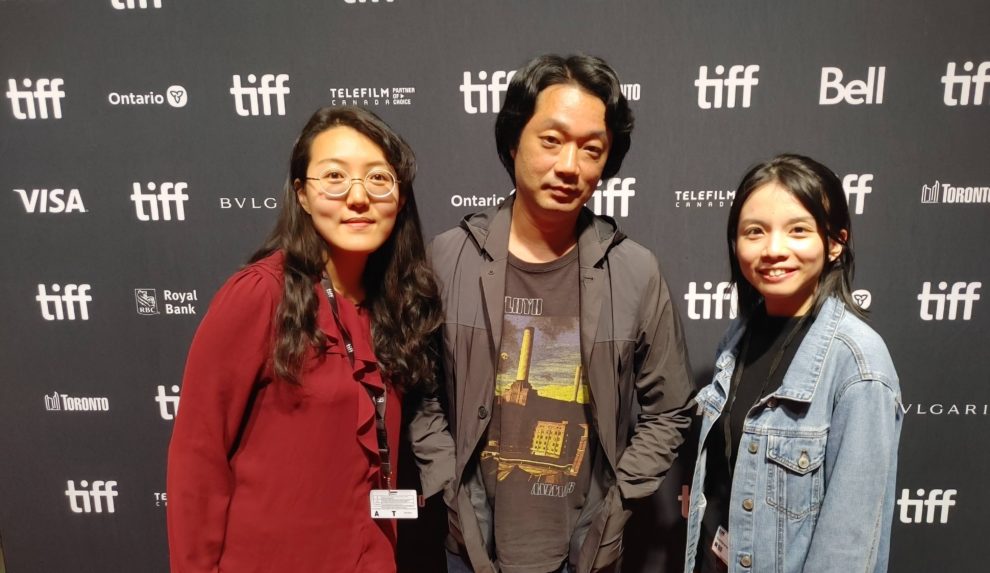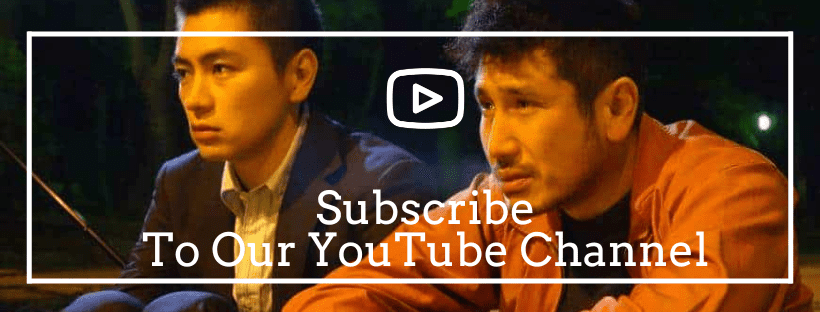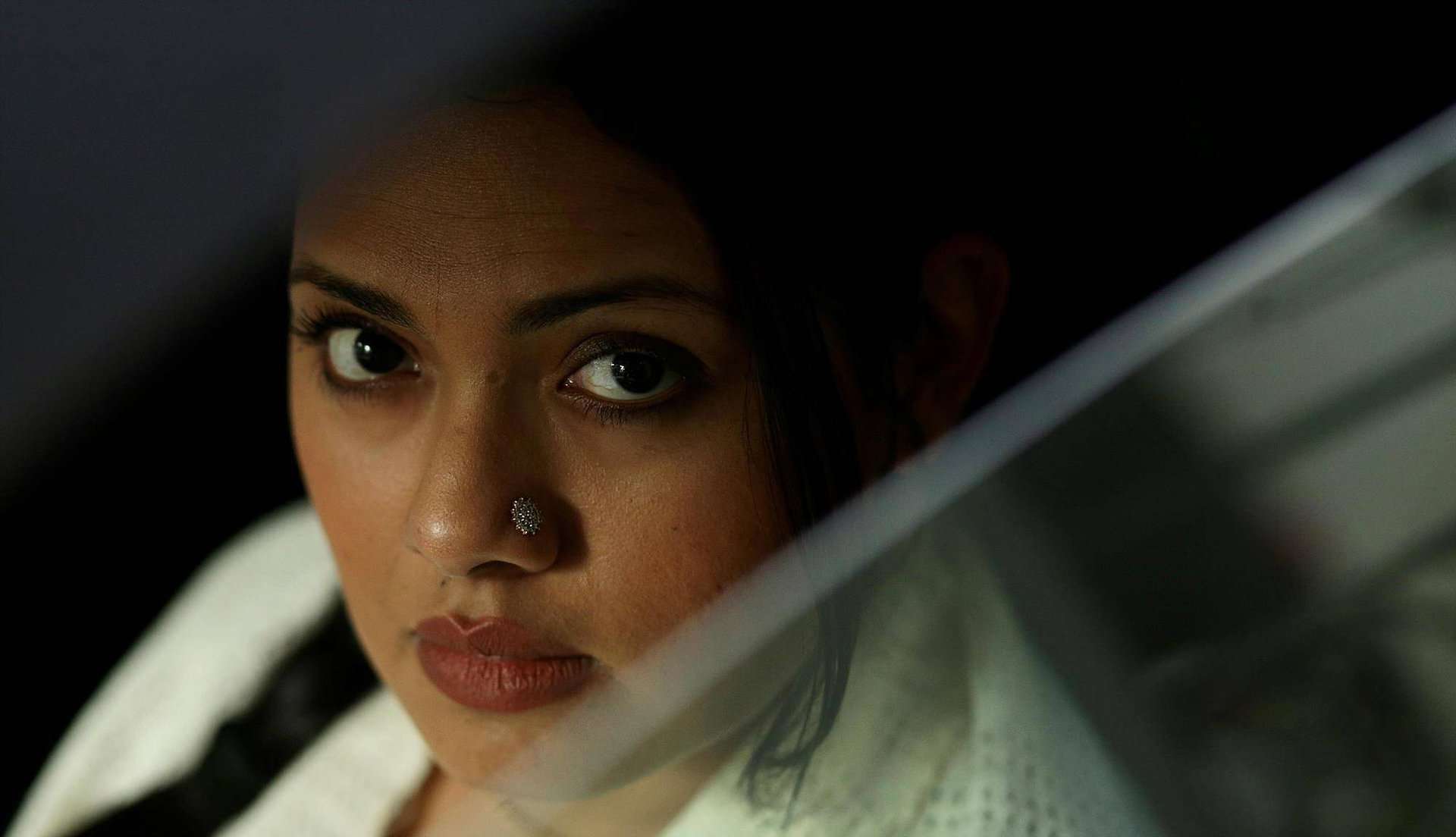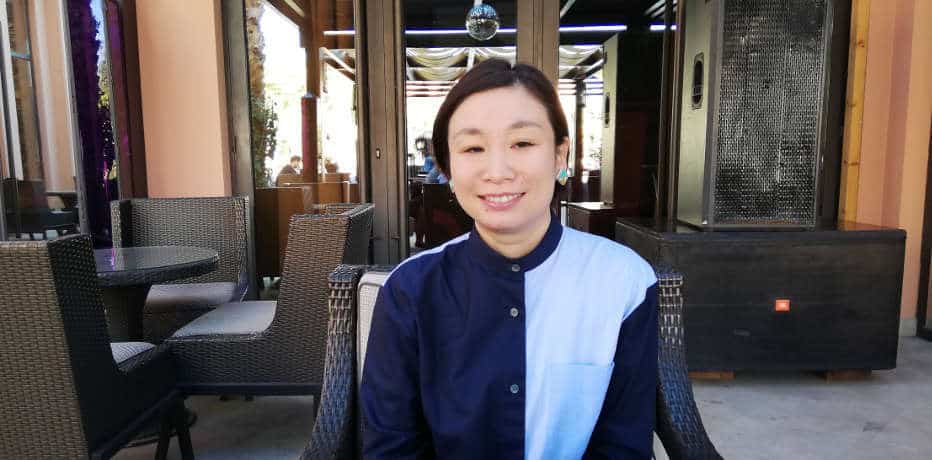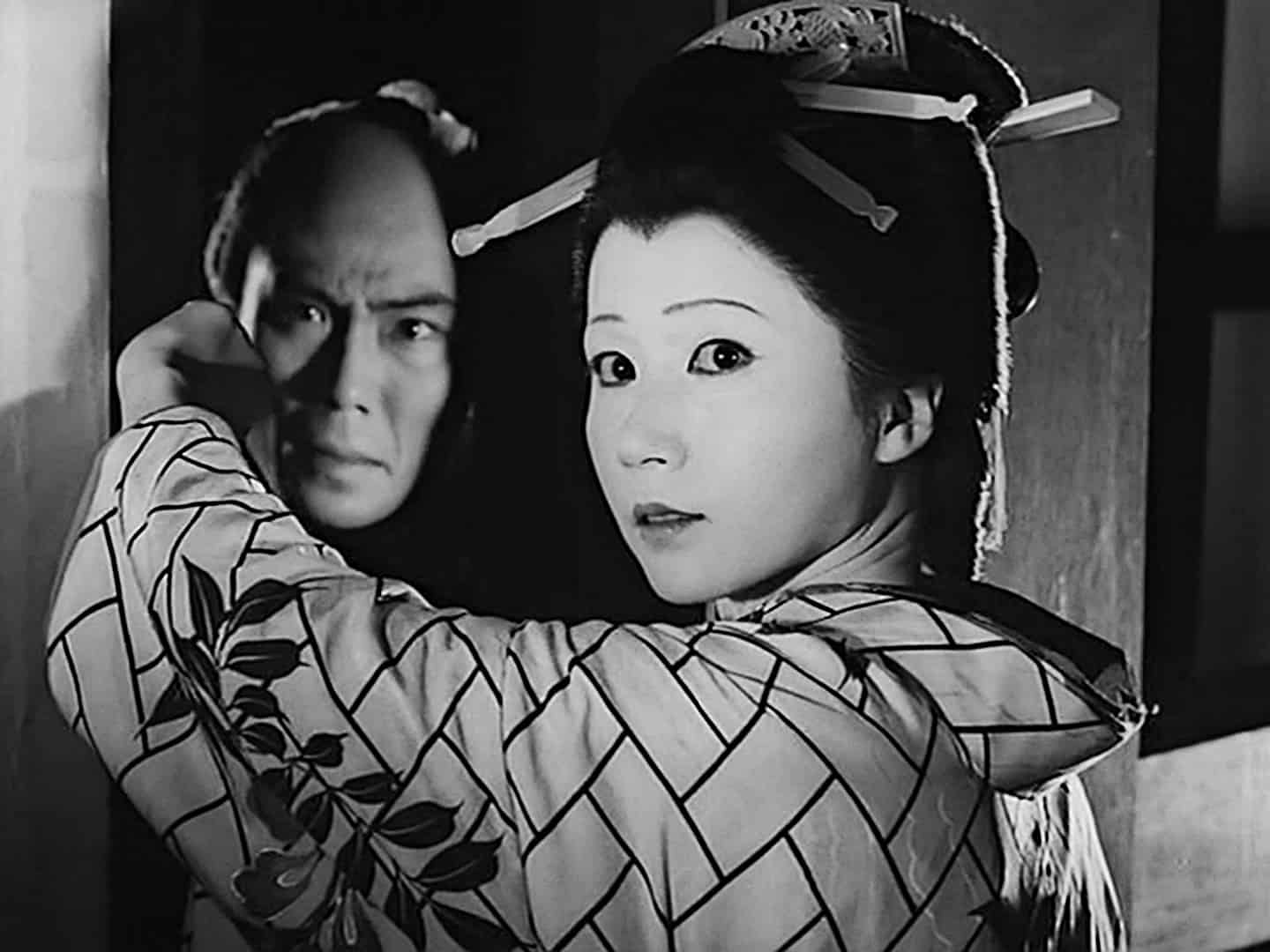Pictured, from left to right: Grace Han, Lou Yi-An, Wan-Ling Yu
Taiwan's upcoming Oscar entry for Best International Feature Film, Lou Yi-an's “Goddamned Asura,” has had an indomitable track record in its home country. After its premiere at Taiwan's Golden Horse Film Festival, “Goddamned Asura” generated buzz with Wang Yu-xuan's Best Supporting Actress win. Later, at the Taipei Film Awards, the film reaped even more laurels – including Best Screenplay, Best Supporting Actress (Wang Yu-xuan), and Best Soundtrack. Now, at the most recent edition of the Toronto International Film Festival, director Lou Yi-an himself made a special appearance on the Canadian red carpet.
In between screenings, happy hours, and other in-person festivities, Lou Yi-an – the calm presence that he is – tells us that he has been savoring the festival's atmosphere. His gentle, but confident voice is a marked contrast from his three-part psychological drama — where the same six characters' fate seem intertwined by love and murder, no matter which version of reality they seem to live in. He ponders for a while while he talks to us about his most recent movie. Over the course of the conversation, we talk through how, at the end of the day, everyone is not as different as they think they may be.
Check out the review of the film
There are so many moving parts in your film. Three chapters, multiple characters, and six very strong personalities. How did you manage to keep them all in order?
In total, there are thirteen versions of this script. In the first six versions, I tried very hard to prove the main character could face different possibilities. I struggled to pull this off. In the seventh version, I pulled it off – and that version is much closer to the movie that we're seeing now, structure-wise. In the previous six versions, I told the story from the perspective of all six characters, including the killer, the friend, the victim, the victim's family, the witness, and the love interest.
I find the structure of the story is very different from a typical Hollywood movie, where each character is assigned a single role – like one hero, one villain, one lover, and so on. Your film likes to assign each character multiple roles, though.
I've been working with stories with multiple timelines for a long time now. It's almost like a habit by now. [For “Goddamned Asura”.] I thought that I would like to have different characters portray one shared incident, since each would have a totally different perception of what took place. This is, in a way, a more complete portrait of the incident. I see this like a kaleidoscope – where the characters at the “top” mix with those at the “bottom,” where the mix of all these different “colors” (where the characters are equivalent to a color) build a more complete image. It is, in other words, a cross section of society where different walks of life come together to provide different perspectives.
The characters possess many personalities and perspectives, but – why do they never grow beyond where they start? Do you see them as stagnant?
Well. When I wrote the script, I realized that Linlin needs to die. [laughs] Social mobility is not so easy to overcome. We can never really live in a perfect world. I guess, though, there is one part where things change across the last two chapters. Linlin's mother, who has been pushing the cart up the hill in the first chapter, finally reaches the top in the last. Reality is not so set in stone.
Additionally, the characters reflect different parts of myself. I think I too possess many different faces; sometimes people like me, sometimes people dislike me depending on the situation. But about the characters themselves… could they grow? I'm pessimistic. I like the characters, but I also hate them in a way, just like how I feel about myself. It's like how Vita is essentially the same person no matter who she dates; she gets involved in the same relationship dynamics. It's almost like making fun of myself in real-time. I want to portray not just the goodness of the characters, but also their ugliness. I think that's what's really beautiful and real.

Who are you most similar to, then?
Probably Sheng. [laughs]
What about similar movies? “Goddamned Asura” almost feels like a multiverse film, in the same vein as “Everything Everywhere At Once” (2022) or the Marvel franchise.
In terms of narrative structure, I was more influenced by Krzysztof Kieślowski's “Blind Chance” (1987). The movie here explores the different decisions and endings made within the same time frame. I think this is probably more similar than the parallel worlds presented by Marvel and the like. I think of the story structure like a loop. [Makes a loop motion with his hands.] The story is at the center of the loop, where the two parts of the line meet. The possibilities just expand from there.
In the second chapter, you also mention the “Big Data Mind.” What do you mean by that?
We always talk about Big Data, but Big Data cannot predict human behavior perfectly. Human behavior is all very messy; we don't really operate logically. Big Data is something that is dead in and of itself; it cannot predict people's actions and decisions, such as murder.
And all the technology in the film…
Media, on the other hand, retroactively records human behavior. This whole film was actually inspired by a series of news reports in 2016, which discussed a random stabbing spree from 2014. Online keyboard warriors essentially demonized the perpetrator here. But I could not help but wonder – “Why this person? Is this murderer really any different from the rest of us?”
So I wanted to think this through the tech of our time. There's the journalist, for example. Live streaming also seems to be a place where people speculate – in a hurry! – about why someone would do something. But honestly, a lot of the time, we just don't know. A does not lead to B or to C. I wanted to portray the craziness of keyboard warriors, but also the fullness of human character.
In related terms, tell me about your sound design.
I experimented a lot with the soundtrack. I wanted to give the impression that the sound was moving with the viewer, from one location to another. I added a double bass to echo the psychological state of the character. I also went out to record random sounds in the Night Market as well – figuring out how we can hear everything and anything there, from ambulances to [vendors] cutting watermelon. I also wanted to decenter the sound from the front. Instead, I tried to move the sound to the left and right, so that the audience would feel like they were immersed into the [“Goddamned Asura”] world.
That's intense. Are you familiar with playing music?
I like “crafting” music, but I just played some drums as a child. [laughs]
Finally – what are you working on next?
I'm writing a TV series about bartending. I think this is a common locus for where different kinds of people meet.
Like “Midnight Diner”?
It's not quite like “Midnight Diner.” There are some similarities, but ultimately the story structure will be different. Encounters will last more than a single episode, and I plan to really explore the characters' psyche when I can. Hopefully it will be on online streaming in the future!
This transcript has been edited for clarity. Translation done by Wan-Ling Yu.


